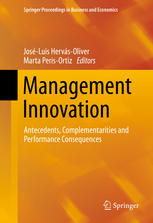

Most ebook files are in PDF format, so you can easily read them using various software such as Foxit Reader or directly on the Google Chrome browser.
Some ebook files are released by publishers in other formats such as .awz, .mobi, .epub, .fb2, etc. You may need to install specific software to read these formats on mobile/PC, such as Calibre.
Please read the tutorial at this link: https://ebookbell.com/faq
We offer FREE conversion to the popular formats you request; however, this may take some time. Therefore, right after payment, please email us, and we will try to provide the service as quickly as possible.
For some exceptional file formats or broken links (if any), please refrain from opening any disputes. Instead, email us first, and we will try to assist within a maximum of 6 hours.
EbookBell Team

0.0
0 reviewsUnder a framework in which technology and organizational innovation are markedly separated, this book advances knowledge on the topic by exploring the antecedents of a firm’s adoption of organizational innovation and its performance consequences.
The concept of organizational innovation encompasses the introduction of new administrative organizational and managerial activities, although currently it is accepted that these terms overlap. There are two different kinds of organizational innovation, usually inter-related: structural innovations(organizational arrangement and the division of labour within it)and managerial innovations(the way a firm organizes its activities or its personnel).
Based on papers from the Organizational Innovation and its Background, Consequences and Technological Complementarities Performance Conference, this volume contributes to the organizational and innovation literature by providing insights on the antecedents of the adoption of management innovation; exploring the complementary roles of management and technological innovation; addressing the performance consequences of management innovation adoption with and without technological innovation; and discusses management innovation using the resource-based view, thus enriching that theoretical approach.